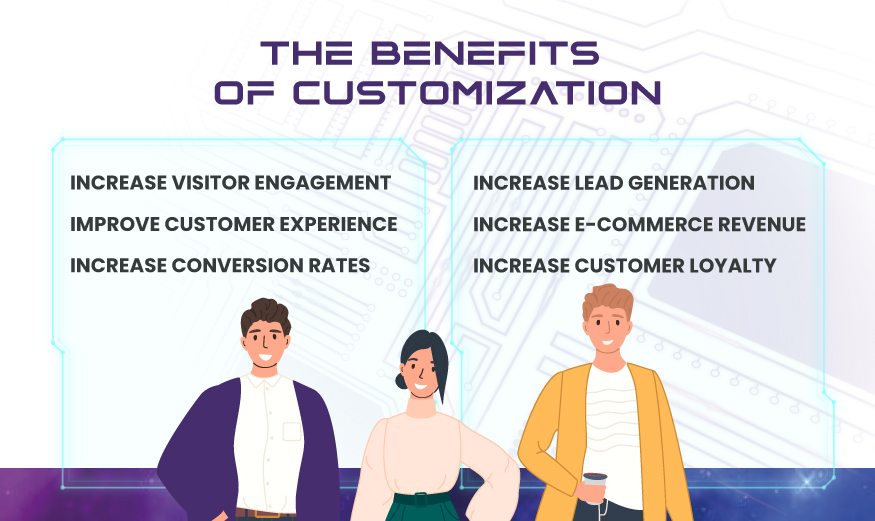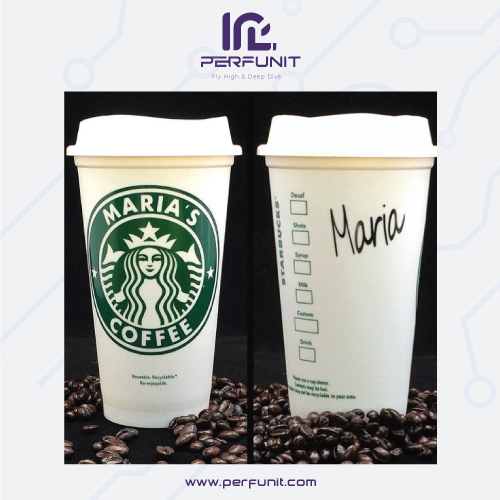Content marketing is a marketing strategy that consists of an entity or a brand designing, producing and distributing media in order to attract prospects, transform them into customers and retain them.
Over the years, marketing strategies have evolved, we are more and more focused on the customer, his needs and his expectations that change from one to another.
Obviously our content strategy must be relevant to our target.
How to organically generate more engagement, leads and sales?
follow our guide which is based on the following plan
- What do we mean by custom content?
- What are the types of customization?
- What are the benefits of customization?
- How to create custom content?
- How to measure your results?
- Examples of one-to-one marketing

What do we mean by custom content ?
Let’s start step by step, personalized marketing or one-to-one marketing is the opposite of mass marketing. Its strength can be seen in the individualization of actions and offers in such a way that the customer has the impression that they are specifically intended for him.
Everyone has certainly already crossed paths with a practice of personalized content, for example: your name in an email, pages adjusted according to your navigation.
What are the types of customization ?
Marketers have always valued the effects of customization. But with the development of technology, this practice has taken more place in marketing strategies than before. today we can list 4 types, let’s discover them:
- Market segmentation:
This is the most well-known type of personalization that has been used for a decade.
This type of personalization consists of dividing the market into segments based on nationality, region, marital status, industry, position/department or media and market trends.Despite all these advantages, it is not enough to judge a strategy as personalized/Custom. Why ? The answer is so simple, because we deliver the same message to a mass audience.
- Customer journey:
The customer journey includes all the stages that a consumer goes through during the buying cycle, from the first contact with the brand to after-sales.
Customer journey analytics allow marketers to understand a customer’s level of business maturity and develop content for each phase of their journey to nudge them into action.
- Buyer personas:
A buyer persona is a detailed description of a person who represents your target audience. We define it based on extensive market research, purchase history, browsing data, social media analysis, surveys of your existing or desired audience.
With this rich information, we can get closer to our target. their needs, pains, desires and values in order to create content, campaigns and even products that are better suited to a given audience.
- Individual customization:
Considered the most advanced level of personalization, it involves creating truly individualized content, so that each consumer’s experience is unique and unequivocally geared towards their particular interests.
What are the benefits of customization ?

Developing such a strategy is an asset for any entity for several reasons, Let’s see together its advantages:
- Build customer loyalty: A customer who receives relevant content to his needs is more likely to engage in a long-term relationship with the brand.
- Improve brand image: By personalizing your message, you will have a better chance of getting closer to your target audience and meeting their expectations.
- Increase sales: customization leads to a better ROI and without exaggeration far superior to any other marketing expenses.
How to create custom content ?
In order to properly develop your personalization strategy, you will need to carefully answer the following questions:
- What information do you consider necessary to define your strategy?
- How to collect them?
- By which tools to process and analyze them?
Once it’s done, you can use the insights to create buyer personas and themes for publications, develop campaigns, sales letters, and even custom products, and co-creation.
How to measure your results ?
We can measure the performance of our personalization strategy referring to our goals, in general, we rely on the following elements:
- Number of views, downloads, or previously defined conversions.
- The commitment of our target, conversion rate, or number of shares
- ROI calculation, lead generation and sales opportunities
Examples of one-to-one marketing

- Starbucks: Integrating the name is a kind of personalization in the marketing offer.

- Netflix : By analyzing past behaviors and views, helps draw conclusions about what content should be the most relevant to their users.
After all, one-to-one marketing has several benefits for both businesses and consumers.it should be part of your overall strategy.
It’s time to develop a personalization strategy appropriate to your objectives; if you need help don’t hesitate to contact us.

